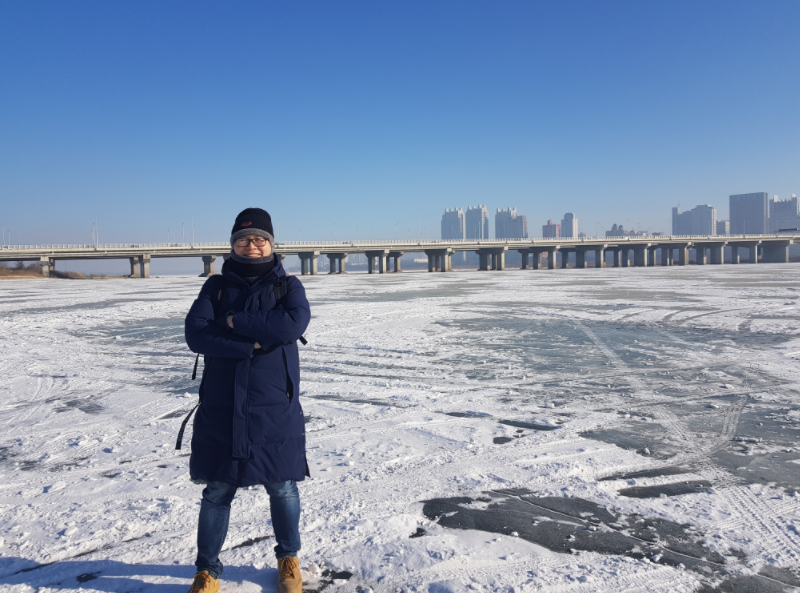Author: Chi Vin Ngo |
What factors would you examine while deciding on a career path? In my opinion, respect, self-development, teamwork, and satisfaction are the four criteria.
In any profession, the initial step is the most important and inspirational for leading to the subsequent stages. A person who invents the first creative object plays a critical part in modern society. For example, brilliant academicians Wang Daheng and Xu Xurong, who built China’s first ruby laser and its first large theodolite, established the foundation for continuing development of the Changchun Institute of Optics, Fine Mechanics and Physics (CIOMP). Inspired by their contributions, subsequent bright generations in CIOMP have invented highly varied scientific and technological innovations, establishing CIOMP as the cradle of China’s Optics. Distinguished theoretical physicist Albert Einstein with his general theory of relativity, the mass-energy equivalence formula, and his discovery of the photoelectric effect is another example of great scholars who laid the groundwork for modern physics. As a result, such illustrious figures should be honored as the spirit of the Chinese proverb, “Gratitude is the sign of noble souls” (食 果 不 忘 种 树 人). In my research career, initial inventors who develop new theories or manufacturing processes are always treated with the utmost respect.
Fortunately, I work in an environment where dedicated professors who cultivate students intensively, founders who established the laboratory or company, researchers who contribute their innovative theories or invented fabrication techniques that are used by other research groups for their projects, and principal investigators who are awarded research fundings are all treated with considerable respect.
Furthermore, new ideas or products are continuously being developed in a research atmosphere. As a result, competition among research organizations or researchers is fierce. Such competition is a strong enough drive to encourage individual growth, and I can find it in my workplace. Not only have I, but many other researchers, worked beyond standard working hours, even on weekends, to gain new expertise or complete their projects successfully. In truth, we are very driven and excited about our work. Each individual has honed his or her skills tirelessly to become a better version of himself or herself, believing that “one is never old to learn” (活到老,学到老).
Though they can be fierce rivalries, scientists also have a strong desire to collaborate. With the help of Professor Bai and Professor Guo and the support fund of the Bill and Melinda Gates Foundation, I led a research team to develop an innovative sanitation system that uses new functional femtosecond-laser-treated surfaces such as fecalphobic, superhydrophobic, and superhydrophilic surfaces. Recently, our director, Professor Li, has been awarded several industrial project fundings which call for close collaboration among research personnel. Regular expert meetings are held to discuss progress achievements and problems arisen, resulting in faster solutions to bottlenecks problems and sped up work process. In addition, several talks have been held to help us learn about the advantages and drawbacks of other research groups' published findings in top journals such as Nature or Science. As a consequence, we are increasingly studing together in order to acquire more knowledge.
On the other hand, research is a profession which requires ongoing work that sometimes mean working continuously day or night. As a result, if the surrounding living environment is not pleasant, unseen stress might occur. Fortunately, I have discovered a pleasant working environment in my research institute. Our research building has a ping-pong area where we can take a break from our intense work. Furthermore, our institute requests the entire research staff to work out for a few minutes every day to broadcasted music, which relaxes me. In addition, several sports competitions have been held by the institute and activities were organized by the International Cooperation Division so foreign faculty and students could learn about Chinese culture. These activities all help to strengthen researcher links. I vividly recall my first Chinese dumpling-making experience with an exhilarating emotion. In addition, the canteen, restaurant, and hotel are all conveniently located on campus. Significantly, a newly constructed apartment for talents is handy and equipped with all the necessary amenities. Being neighbors with colleagues means researchers can forge a closer relationship, which can facilitate collaboration in research as well as post-work research discussions. Additionally, family members, such as spouses and children, may immerse themselves in a research environment where they might identify commonalities to discuss. Therefore, intercultural communications between Chinese and foreign families may bring individuals closer together, becoming friends rather than just colleagues.
In conclusion, I am pleased to work in my research institute, where all my four criteria have been met. That institute is Changchun Institute of Optics, Fine Mechanics and Physics, located in a friendly and sociable city called Changchun.

